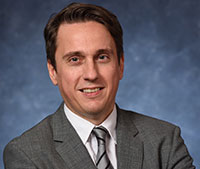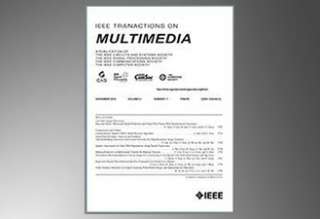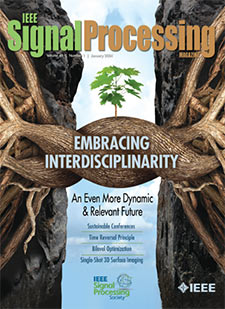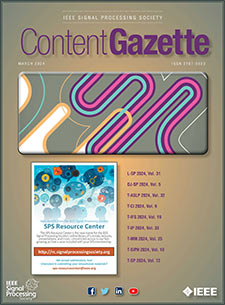- Our Story
- Publications & Resources
- Publications & Resources
- Publications
- IEEE Signal Processing Magazine
- IEEE Journal of Selected Topics in Signal Processing
- IEEE Signal Processing Letters
- IEEE/ACM Transactions on Audio Speech and Language Processing
- IEEE Transactions on Computational Imaging
- IEEE Transactions on Image Processing
- IEEE Transactions on Information Forensics and Security
- IEEE Transactions on Multimedia
- IEEE Transactions on Signal and Information Processing over Networks
- IEEE Transactions on Signal Processing
- IEEE TCI
- IEEE TSIPN
- Data & Challenges
- Submit Manuscript
- Guidelines
- Information for Authors
- Special Issue Deadlines
- Overview Articles
- Top Accessed Articles
- SPS Newsletter
- SigPort
- SPS Resource Center
- Publications Feedback
- Publications FAQ
- Blog
- News
- Dataset Papers
- Conferences & Events
- Community & Involvement
- Professional Development
- For Volunteers
- Information for Authors-OJSP
-
Home
Conferences Events IEEE JSTSP Article IEEE Signal Processing Magazine IEEE TIFS Article IEEE TMM Article IEEE TSP Article Jobs in Signal Processing Lectures Machine Learning Seasonal Schools Signal Processing News SPM Article SPS Distinguished Lectures SPS Newsletter Article SPS Webinar SPS Webinars SPS Webinar Series Webinar webinars
-
Our Story
What is Signal Processing?

The technology we use, and even rely on, in our everyday lives –computers, radios, video, cell phones – is enabled by signal processing. Learn More » -
Publications & Resources
-
SPS Resources
- Signal Processing Magazine The premier publication of the society.
- SPS Newsletter Monthly updates in Signal Processing
- SPS Resource Center Online library of tutorials, lectures, and presentations.
- SigPort Online repository for reports, papers, and more.
- SPS Feed The latest news, events, and more from the world of Signal Processing.
-
SPS Resources
-
Conferences & Events
-
Community & Involvement
-
Membership
- Join SPS The IEEE Signal Processing Magazine, Conference, Discounts, Awards, Collaborations, and more!
- Chapter Locator Find your local chapter and connect with fellow industry professionals, academics and students
- Women in Signal Processing Networking and engagement opportunities for women across signal processing disciplines
- Students Scholarships, conference discounts, travel grants, SP Cup, VIP Cup, 5-MICC
- Young Professionals Career development opportunities, networking
- Get Involved
-
Technical Committees
- Applied Signal Processing Systems
- Audio and Acoustic Signal Processing
- Bio Imaging and Signal Processing
- Computational Imaging
- Image Video and Multidimensional Signal Processing
- Information Forensics and Security
- Machine Learning for Signal Processing
- Multimedia Signal Processing
- Sensor Array and Multichannel
- Signal Processing for Communication and Networking
- Signal Processing Theory and Methods
- Speech and Language Processing
- Technical Working Groups
- More TC Resources
-
Membership
-
Professional Development
-
Professional Development
- Mentoring Experiences for Underrepresented Young Researchers (ME-UYR)
- Micro Mentoring Experience Program (MiME)
- Distinguished Lecturer Program
- Distinguished Lecturers
- Distinguished Lecturer Nominations
- Past Lecturers
- Distinguished Industry Speaker Program
- Distinguished Industry Speakers
- Distinguished Industry Speaker Nominations
- Industry Resources
- IEEE Training Materials
- Jobs in Signal Processing: IEEE Job Site
-
Career Resources
- SPS Education Program Educational content in signal processing and related fields.
- Distinguished Lecturer Program Chapters have access to educators and authors in the fields of Signal Processing
- PROGRESS Initiative Promoting diversity in the field of signal processing.
- Job Opportunities Signal Processing and Technical Committee specific job opportunities
- Job Submission Form Employers may submit opportunities in the area of Signal Processing.
-
Professional Development
-
For Volunteers
-
For Board & Committee Members
- Board Agenda/Minutes* Agendas, minutes and supporting documentation for Board and Committee Members
- SPS Directory* Directory of volunteers, society and division directory for Board and Committee Members.
- Membership Development Reports* Insight into the Society’s month-over-month and year-over-year growths and declines for Board and Committee Members
-
For Board & Committee Members
Popular Pages
Today's:
- Submit a Manuscript
- Information for Authors
- (MLSP 2024) 2024 IEEE International Workshop on Machine Learning for Signal Processing
- IEEE Transactions on Multimedia
- IEEE Transactions on Image Processing
- IEEE/ACM Transactions on Audio Speech and Language Processing
- IEEE Signal Processing Letters
- Conferences & Events
- IEEE Transactions on Signal Processing
- IEEE Journal of Selected Topics in Signal Processing
- IEEE Transactions on Information Forensics and Security
- (SLT 2024) 2024 IEEE Spoken Language Technology Workshop
- Signal Processing 101
- (ICASSP 2025) 2025 IEEE International Conference on Acoustics, Speech and Signal Processing
- Conference Call for Papers
All time:
- Information for Authors
- Submit a Manuscript
- IEEE Transactions on Image Processing
- 404 Page
- IEEE/ACM Transactions on Audio Speech and Language Processing
- IEEE Transactions on Information Forensics and Security
- IEEE Transactions on Multimedia
- IEEE Signal Processing Letters
- IEEE Transactions on Signal Processing
- Conferences & Events
- IEEE Journal of Selected Topics in Signal Processing
- Information for Authors-SPL
- Conference Call for Papers
- Signal Processing 101
- IEEE Signal Processing Magazine
Last viewed:
- (ICASSP 2025) 2025 IEEE International Conference on Acoustics, Speech and Signal Processing
- Conference Call for Papers
- SPS Announces 2019 Class of Distinguished Lecturers and Distinguished Industry Speakers
- Conferences & Events
- IEEE Transactions on Multimedia
- Editorial Board
- IEEE Transactions on Image Processing
- IEEE Journal of Selected Topics in Signal Processing
- Submit a Manuscript
- IEEE Open Journal of Signal Processing
- Publications FAQ
- IEEE Transactions on Computational Imaging
- Login Error
- IEEE JSTSP Special Issue on Distributed Signal Processing for Extremely Large-Scale Antenna Array Systems
- Membership
Series to Highlight Young Professionals in Signal Processing: Dr. Ervin Sejdić
You are here
Newsletter Menu
Newsletter Categories
Top Reasons to Join SPS Today!
1. IEEE Signal Processing Magazine
2. Signal Processing Digital Library*
3. Inside Signal Processing Newsletter
4. SPS Resource Center
5. Career advancement & recognition
6. Discounts on conferences and publications
7. Professional networking
8. Communities for students, young professionals, and women
9. Volunteer opportunities
10. Coming soon! PDH/CEU credits
Click here to learn more.
News and Resources for Members of the IEEE Signal Processing Society
Series to Highlight Young Professionals in Signal Processing: Dr. Ervin Sejdić
 This issue brings to you our interview with Dr. Ervin Sejdić, an Associate Professor at the Swanson School of Engineering, University of Pittsburgh, where he directs a research laboratory focused on engineering developments in medicine. His research has focused on creating computational biomarkers indicative of age- and disease-related changes in functional outcomes such as swallowing, gait, and handwriting. Dr. Sejdić has received several prestigious awards including the Presidential Early Career Award for Scientists and Engineers in 2013. He plays several roles in the IEEE Signal Processing Society such as the Newsletter Editor and Young Professionals Committee. Dr. Sejdić is the Editor-in-Cheif of the BioMedical Engineering Online and an Associate Editor of the IEEE Transactions on Biomedical Engineering.
This issue brings to you our interview with Dr. Ervin Sejdić, an Associate Professor at the Swanson School of Engineering, University of Pittsburgh, where he directs a research laboratory focused on engineering developments in medicine. His research has focused on creating computational biomarkers indicative of age- and disease-related changes in functional outcomes such as swallowing, gait, and handwriting. Dr. Sejdić has received several prestigious awards including the Presidential Early Career Award for Scientists and Engineers in 2013. He plays several roles in the IEEE Signal Processing Society such as the Newsletter Editor and Young Professionals Committee. Dr. Sejdić is the Editor-in-Cheif of the BioMedical Engineering Online and an Associate Editor of the IEEE Transactions on Biomedical Engineering.
We approached Dr. Sejdić with a few questions:
Q. Please provide a brief background about yourself.
I’m a classically trained electrical engineer, and during my undergraduate studies, I specialized in wireless communications. During my graduate school, I focused on signal processing, specifically, on time-frequency representations and pattern recognition. My postdoctoral fellowship was more focused on biomedical phenomena. My first postdoc focused on assessing human functions such as swallowing and gait, while my second postdoc focused on comprehensive physiological assessments of older adults with various neurological disorders. In 2011, I joined the University of Pittsburgh as a faculty member, where
I currently lead a research lab devoted to the development of computational biomarkers indicative of age- and disease-related changes and their contributions to functional decline under normal and pathological conditions. In particular, I am proud to say that our mission is to develop clinically relevant solutions by fostering innovation in computational approaches and instrumentation that can be translated into bedside care. My students and I work very closely with patients and clinicians. Almost of all of my students are involved in human subjects research, and they actively recruit subjects for our studies, while also collecting data from these subjects.
Q. How does your work affect society?
In our projects, we attempt to understand and assess two major human functions: swallowing and gait.
Specifically, patients with dysphagia (swallowing disorders) because of stroke, head and neck cancer treatment, and other conditions develop adverse events like aspiration pneumonia, malnutrition, and dehydration at an alarming rate. Dysphagia is prevalent in nursing homes, residential group homes for disabled adults, and in pediatric hospitals. Choking due to airway obstruction and pneumonia due to aspiration (inhalation of swallowed food and liquids) are common results of dysphagia. When recognized in a timely manner before patients are offered oral food, liquids, or medications, these consequences of dysphagia are preventable, but in many settings, they are not identified before these adverse events occur. We typically screen for dysphagia by observing patients drink water or other material. These tests are inexpensive and noninvasive, but the critical barrier is that they cannot identify at-risk patients who aspirate without symptoms (silent aspiration) because silent aspiration is completely invisible to any observer without sophisticated imaging equipment. To address this issue, our major hypothesis is that the analysis of swallowing vibration signals and swallowing sounds may be helpful for identifying both impaired swallowing safety and impaired swallowing efficiency during swallowing screening.
When it comes to a human gait, a loss of motor skill of walking in older adults leads to walking difficulty associated with declines in physical function, morbidity, and mortality. Current standard exercise interventions to prevent or reduce walking difficulty have resulted in only modest improvements in walking that may not be sustainable, particularly in older adults with chronic conditions. The scarcity of clinical measures responsive to changes in the motor skills underpinning walking limit the widespread adoption of these promising approaches. Simple gait metrics (e.g., gait speed, step length, width) have been the primary outcome of clinical trials to improve walking. The motor skills behind walking or the fluency, efficiency, and automaticity of gait that results from the integration of the timing and coordination of stepping with upright posture cannot be represented by simple gait metrics alone. The critical need is to determine gait measures that can distinguish and describe the motor skills associated with the walking process and are most responsive to intervention-related change.
Q. How is your work related to signal processing?
Signal processing is the core of our research. Without signal processing, we would not be able to assess these human functions, and essentially, we would rely on statistical approaches, which are sufficient to describe cohort studies, but not time changes in these functions.
Q. How has your involvement with the IEEE SPS helped you in building your career?
IEEE is essentially the reason why I am doing what I am doing. Back in the late 1990s, I registered as a student member of IEEE. A year or two later, I also joined the signal processing society. I remember reading all editions of the IEEE Spectrum and being in awe of technical developments described by the magazine. I kept imagining what it would be like to be an inventor of some of these cool technical ideas. Somehow I ended up reading about the application of signal processing in medical/clinical fields, and I developed an early desire to contribute to biomedical signal processing. While during my Ph.D. I briefly investigated the application of signal processing in cardiology, I fully immersed myself in the medical field during my postdoc, and I have never looked back. I truly enjoy this work, as I’m still a signal processing engineer, looking for novel solutions, but their application comes from helping other human beings.
Q. Anything else that you would like to add?
Becoming an expert takes years. There is no shortcut. However, IEEE and IEEE SPS can provide a major boost to your careers through various networking opportunities and conferences. Please participate in them! You won’t regret it.
Open Calls
Conference News
Publications News
Education & Resources
Society News
Chapter & DL News
TC News
SPS on Twitter
- DEADLINE EXTENDED: The 2023 IEEE International Workshop on Machine Learning for Signal Processing is now accepting… https://t.co/NLH2u19a3y
- ONE MONTH OUT! We are celebrating the inaugural SPS Day on 2 June, honoring the date the Society was established in… https://t.co/V6Z3wKGK1O
- The new SPS Scholarship Program welcomes applications from students interested in pursuing signal processing educat… https://t.co/0aYPMDSWDj
- CALL FOR PAPERS: The IEEE Journal of Selected Topics in Signal Processing is now seeking submissions for a Special… https://t.co/NPCGrSjQbh
- Test your knowledge of signal processing history with our April trivia! Our 75th anniversary celebration continues:… https://t.co/4xal7voFER
Home | Sitemap | Contact | Accessibility | Nondiscrimination Policy | IEEE Ethics Reporting | IEEE Privacy Policy | Terms | Feedback
© Copyright 2024 IEEE – All rights reserved. Use of this website signifies your agreement to the IEEE Terms and Conditions.
A not-for-profit organization, IEEE is the world's largest technical professional organization dedicated to advancing technology for the benefit of humanity.









